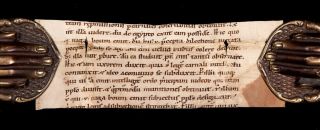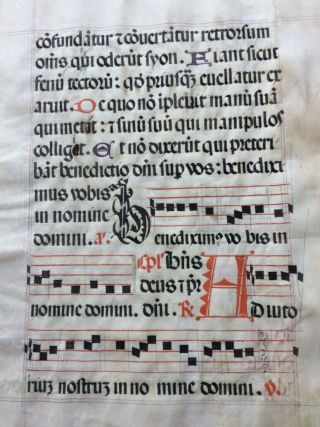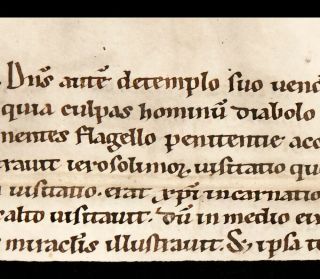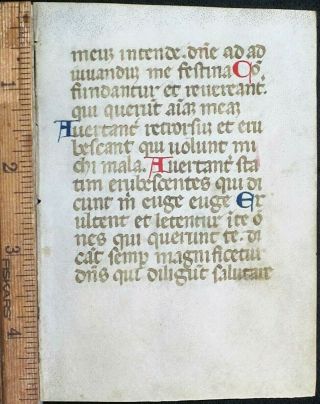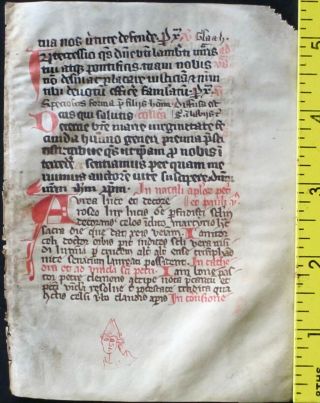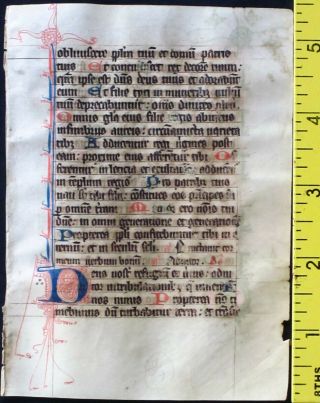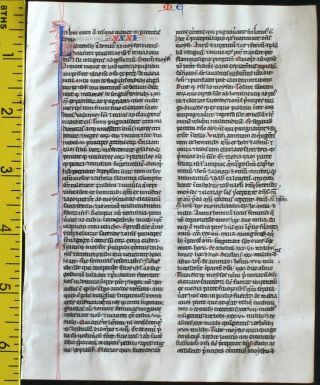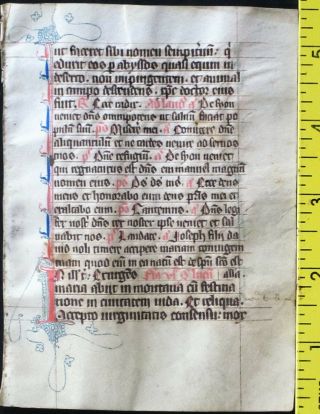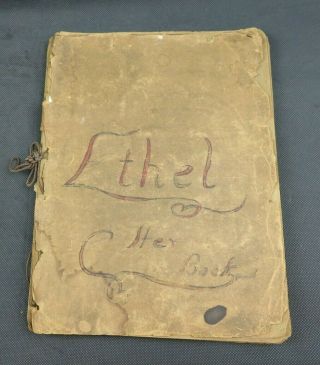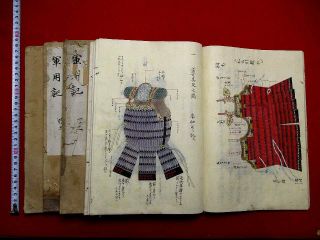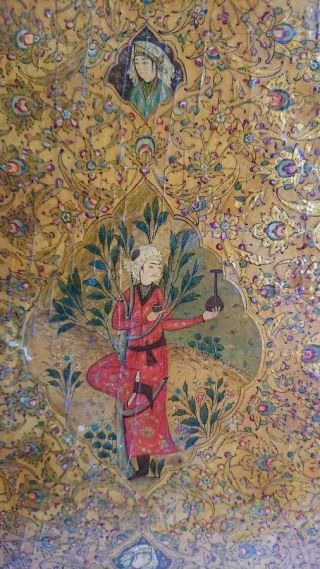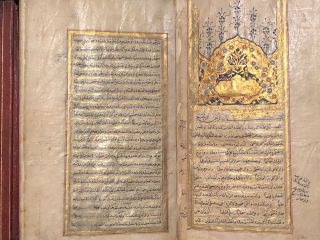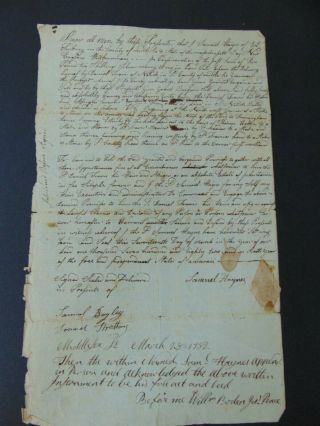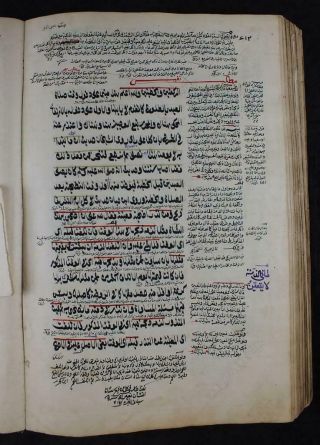ROMANESQUE MANUSCRIPT Leaf WERNER ELLERBACH Deflorationes EARLY MEDIEVAL Vellum
Item History & Price
Written probably in Southern Germany, in the 1st half of 12th century, most likely ca. 1120s or 1130s.(Extracted from a late 15th-century monastic binding, where it was used as a sewing guard.)Offered here is a substantial fragment of a very handsome and exceedingly rare early-Medieval manuscript of a little-known homiletic work, written in an eleg...ant, romanesque bookhand, i.e. mature Carolingian minuscule with some proto-gothic features.Werner, who, according to Migne, died in 1126 was a popular and prolific preacher. However, very little is known about his life, other than the fact that he was abbot of the St Blaise Abbey (Kloster Sankt Blasien), a Benedictine monastery in the village of St. Blasien in the Black Forest in Baden-Württemberg (South-Western Germany), and later, in 1099, he became the first abbot of the newly established Benedictine monastery at Wiblingen, near Ulm.Werner's Deflorationes was intended as a homiliarium (a homiliary), i.e. a collection of homilies, or familiar explanations of the Gospels designed to provide the preachers with an arsenal of homiletic material for their sermons, and arranged according to the Liturgical Year."Werner's collection, the Deflorationes sanctorum patrum, or Flowers from the Fathers', fills more than five hundred columns in Migne (151. 734 - 1294), and joins, with discourses from patristic times, other sermons, some of them probably by Werner himself. Thirteen are taken from Honorius of Autun."(Ph. Schaff, History of the Christian Church, Vol. V, Part 1, p.858)Very few manuscripts of Werner's Deflorationes are extant, even in a fragmentary state. A single incunable edition of this work was printed in Basel in 1494 (see Goff W12).This early 12th-century fragment is a remarkably early specimen of a manuscript of Werner's Deflorationes, PRODUCED PERHAPS DURING THE AUTHOR'S LIFETIME, or very shortly after his death.The fragment presented here is fairly well-preserved and quite legible and contains text from the homilies for the Second Sunday after Pentecost based on the Gospel of Luke, and closely matches (with a few curious minor variations) the readings of J.-P. Migne, Patrologiae latina cursus completus, 2nd series, Vol. 157, col. 1019-20.The text on recto begins:
"[dum] terram repromissionis per carnales observantias obtinuit. Exiit illam videre, dum de Aegypto exiit eam possidere."
and ends with:
"... qui jugo legis ad subjectionem stringebatur. Per illum vero qui uxo[rem] ..."The text on verso begins:
"... sectae philosophorum, sepes, diversi ritus paganorum."
and ends with
"... ab ea sitis excusati. Nos etenim servi summi patris familias ..."Paleographically, the fragment exemplifies the period when the Carolingian minuscule, which had been the dominant book script in Europe since the late 8th century, was starting to transform into the proto gothic script. The script of this early 12th-century fragment still retains such characteristically carolingian features as the predominance of the long s (even at the end of words), straight 'r' and straight ('half-uncial') 'd', no forking of ascenders and no fusion of adjacent letters. Only a few proto-gothic features can be found in this script: triangular serifs at the end of ascenders have replaced the classic carolingian club-shaped forms, and quite a few scribal abbreviations (contractions and suspensions) have been used.
Physical description:A horizontal fragment of a single leaf, measuring approximately 173 mm x 65 mm, from a manuscript on vellum, written in dark-brown ink in an elegant, somewhat rounded late-Carolingian (romanesque) bookhand. The fragment extends full width of a page, and contains 11 lines of text (bottom one slightly cropped) on both recto and verso.Condition:Very well preserved, given its near 900-year age, and the fact that it was extracted from an incunable binding, where it was used as a sewing guard. With a horizontal crease (rather unobtrusive) between the 3rd and the 4th line of text. Three short vertical slits (one of them marginal) affecting a few letters, but, generally, without loss of legibility. A brownish glue(?) stain to the outer margin (text not affected). Some light general soiling. In all, a very attractive, solid and substantial manuscript fragment of a very rare homiletic work, and an excellent specimen of romanesque paleography.
Please right-click on thumbnails below and choose "open image in a new window" option to see larger images.




